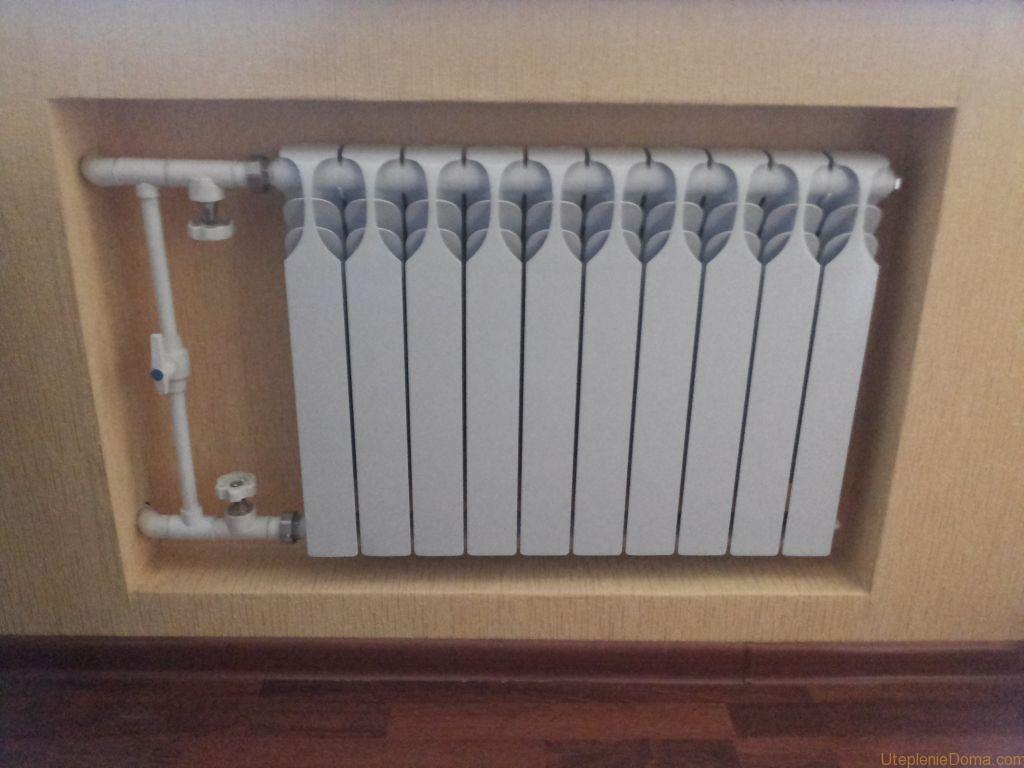The main task of any heating battery is to heat the room. For these reasons, heat dissipation is the main parameter to consider when buying. For each model of heating devices, the heat transfer values are different, including for bimetal. This parameter is affected by the volume and number of sections.
So, what is the power of 1 section of bimetallic heating radiators? Knowing the value, you can correctly calculate the required size of the device.
What is heat dissipation
The definition of heat transfer comes down to a couple of simple words - this is the amount of heat released by the radiator for a certain time. Radiator power, thermal power, heat flow - the designation of one concept and is measured in watts. For 1 section of a bimetallic radiator, this number is 200 watts.
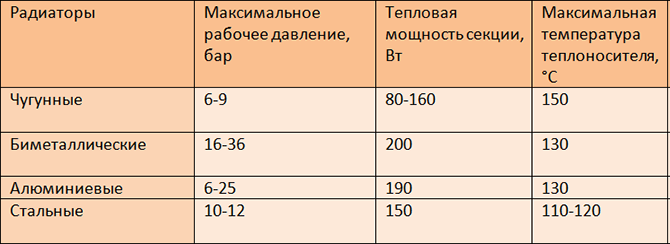
In some documents, there are heat transfer values calculated in calories per 1 hour. To avoid confusion, calories are easily converted to Watts using simple calculations (1 W = 859.8 cal/hour).
Heat from the battery heats the room as a result of three processes:
- heat exchange;
- convection;
- radiation.

Each model of heating devices uses all types of heating, but in different proportions. For example, radiators are considered to be those batteries that transmit to the surrounding space from 25% of thermal energy through radiation. But now the term "radiator" has begun to call any heating device, regardless of the main method of heating.
Dimensions and capacity of sections
Bimetallic radiators due to steel inserts are more compact than aluminum, cast iron, steel models. To some extent, this is not bad, the smaller the section in size, the less coolant is required for heating, which means that the battery is more economical in terms of heat energy consumption in operation. However, pipes that are too narrow become clogged faster with debris and rubbish, which are inevitable companions in modern heating networks.
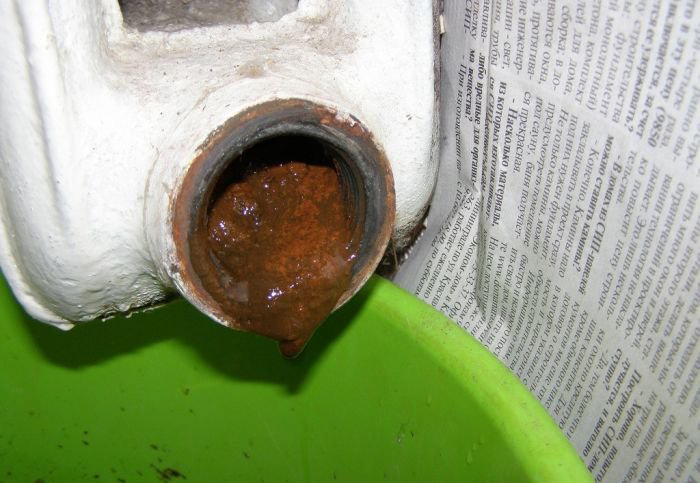
In good models of bimetal radiators, the thickness of the steel cores inside is like that of the walls of an ordinary water pipe. The heat transfer of the battery depends on the capacity of the sections, and the center distance directly affects the capacity parameters:
- 20 cm - 0.1-0.16 l;
- 35 cm - 0.15-0.2 l;
- 50 cm - 0.2-0.3 l.
From the above data it follows that bimetal radiators require a small amount of coolant. For example, a heater of ten sections 35 cm high and 80 cm wide holds only 1.6 liters. Despite this, the power of the heat flow is enough to warm the air in a room of 14 square meters. m. It is worth considering that a battery of this size weighs almost twice as much as its aluminum counterparts - 14 kg.
The vast majority of bimetal batteries can be purchased in specialized stores in one section and a radiator of exactly the size required by the room can be assembled. This is convenient, although there are one-piece models with a fixed number of sections (usually no more than 14 pieces). Each part has four holes: two inlets and two outlets. Their dimensions may vary depending on the model of the heater. To make bimetal radiators easier to assemble, two holes are made with right-hand threads, and two with left-hand threads.
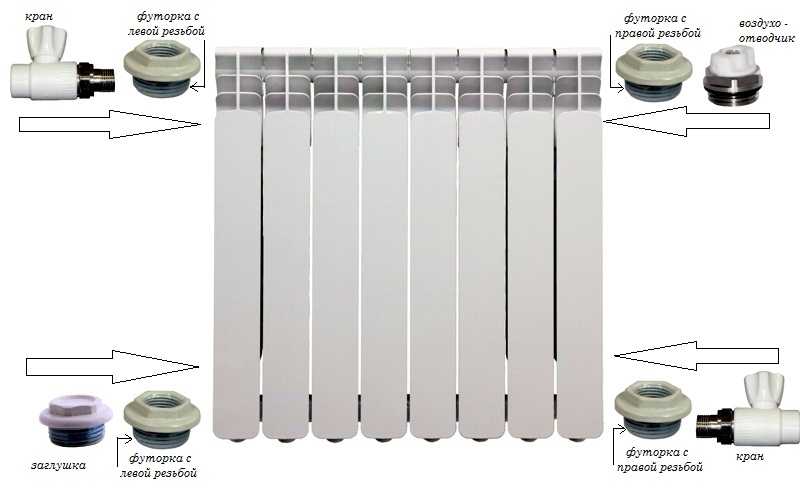
How to choose the right number of sections
The heat transfer of bimetallic heating devices is indicated in the data sheet. Based on these data, all necessary calculations are made. In cases where the heat transfer value is not indicated in the documents, these data can be viewed on the official websites of the manufacturer or the average value can be used in the calculations. For each individual room, a separate calculation should be carried out.
To calculate the required number of bimetal sections, several factors must be taken into account. The heat transfer parameters of bimetal are slightly higher than those of cast iron (taking into account the same operating conditions. For example, let the coolant temperature be 90 ° C, then the power of one section of bimetal is 200 W, of cast iron - 180 W).
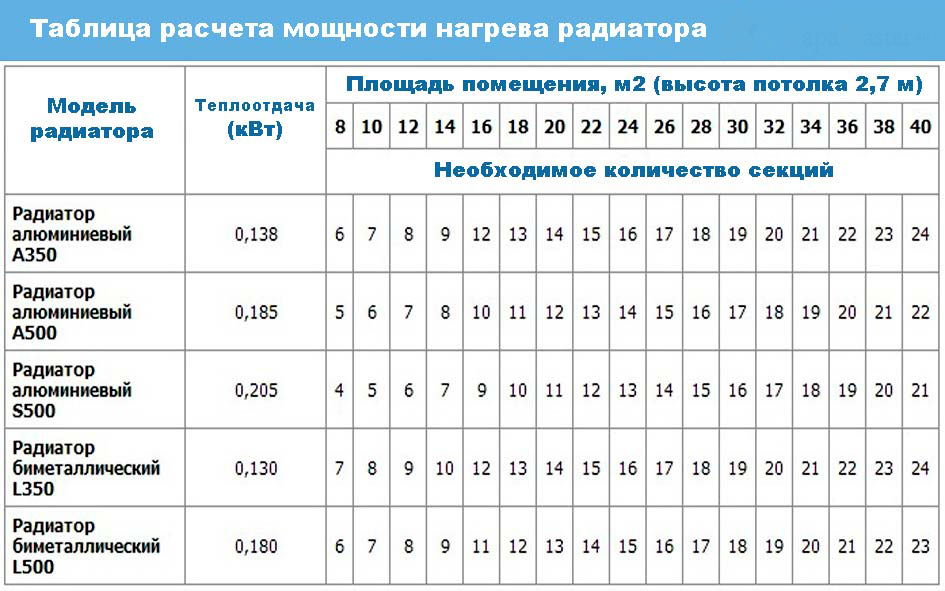
If you are going to change the cast-iron radiator to a bimetallic one, then with the same dimensions, the new battery will heat a little better than the old one. And this is good. It should be borne in mind that over time, heat transfer will be slightly less due to blockages inside the pipes. Batteries become clogged with deposits that appear due to the contact of metals with water.
Therefore, if you still decide to replace, then calmly take the same number of sections. Sometimes batteries are installed with a small margin in one or two sections. This is done to avoid heat transfer losses due to clogging. But if you purchase batteries for a new room, you can’t do without calculations.
Calculation by dimensions
The heat transfer of radiators depends on the volume of the room to be heated. The larger the room, the more sections will be required. Therefore, the simplest calculation is by the area of \u200b\u200bthe room.
For plumbing, there are special standards strictly regulated by SNiP. Batteries are no exception. For buildings in the temperate zone, the standard heating output is 100 watts per square meter of room. Having calculated the area of \u200b\u200bthe room, multiplying the width by the length, it is also necessary to multiply the resulting value by 100. This will turn out the total heat transfer of the battery. It remains only to divide it into the heat transfer parameters of the bimetal.
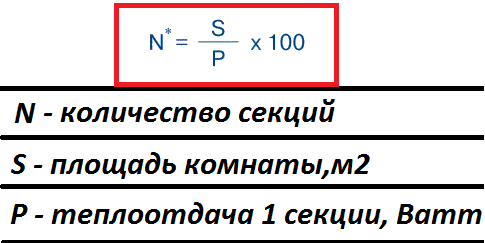
For a 3x4 m room, the calculation will look like this:
K \u003d 3x4x100 / 200 \u003d 6 pcs.
The formula is extremely simple, but allows you to calculate only the approximate number of bimetal sections. These calculations do not take into account such important parameters as:
- ceiling height (the formula is more or less accurate for ceilings no higher than 3 m);
- location of the room (north side, corner of the house);
- the number of window and door openings;
- the degree of insulation of external walls.
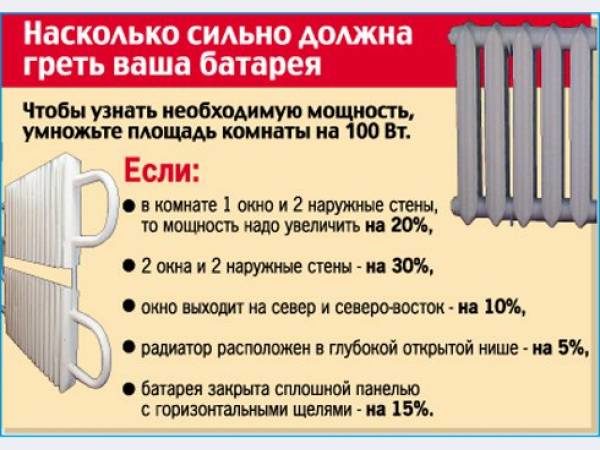
Volume calculation
Calculating the heat transfer of the battery by the volume of the room is a little more complicated. To do this, you need to know the width, length and height of the room, as well as the heating standards set for one m 3 - 41 W.
What heat output should bimetallic radiators have for a 3x4 m room, taking into account the ceiling height of 2.7 m: V \u003d 3x4x2.7 \u003d 32.4 m 3.
Having received the volume, it is easy to calculate the heat transfer of the battery: P \u003d 32.4x41 \u003d 1328.4 W.
As a result, the number of sections (taking into account the thermal power of the battery at a high temperature mode of 200 W) will be equal to: K = 1328.4/200 = 6.64 pcs.
The resulting number, if it is not an integer, is always rounded up. Based on more accurate calculations, you will need 7 sections, not 6.
Correction factors
Despite the same values in the data sheet, the actual heat output of the radiators may differ depending on the operating conditions. Considering that the above formulas are accurate only for houses with average statistical indicators of insulation and for areas with a temperate climate, under other conditions it is necessary to make adjustments to the calculations.
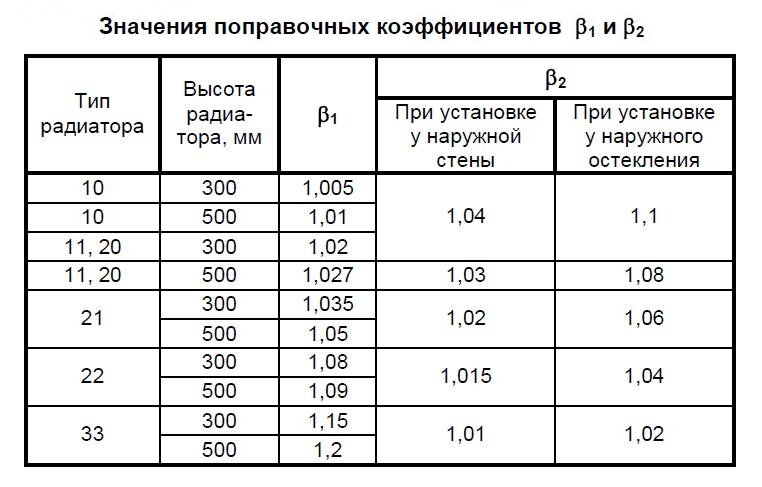
To do this, the value obtained during the calculations is additionally multiplied by a coefficient:
- corner and northern rooms - 1.3;
- regions with extreme frosts (Far North) - 1.6;
- screen or box - add another 25%, niche - 7%;
- for each window in the room, the total heat output for the room increases by 100 W, for each door - 200 W;
- cottage - 1.5;
Important! The last coefficient when calculating bimetallic radiators is used extremely rarely, because such heating devices are almost never installed in private homes due to their high cost.
Efficient heat dissipation
The heat output values for radiators are indicated in the data sheet or on the manufacturers' websites. They are suitable for specific parameters of heating systems. The thermal head of the system is an important characteristic that cannot be ignored when making the necessary calculations. Usually, the heat transfer value of 1 section is given for a heat head of 60 ° C, which corresponds to the high-temperature mode of the heating system with a water temperature of 90 ° C. Such parameters are now found in old houses. For new buildings, more modern technologies are already being used, in which a high thermal head is no longer required. Its value for the heating system is 30 and 50 ° C.
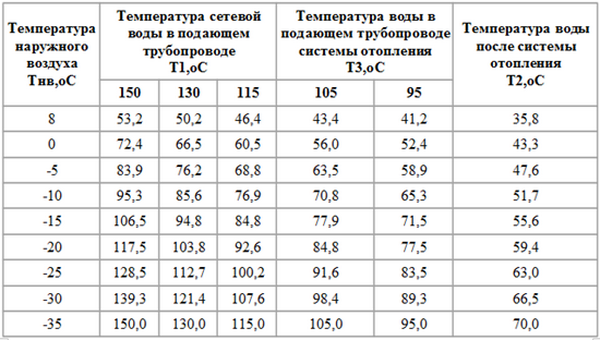
Due to the different values of the thermal head in the data sheet and in fact, it is necessary to recalculate the power of the sections. In most cases, it turns out to be lower than stated. The heat transfer value is multiplied by the actual value of the heat head and divided by what is indicated in the documents.
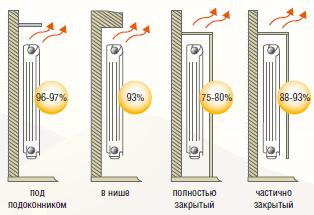
The return parameters of one section of a bimetallic heating battery directly affect its dimensions and ability to heat a room. It is impossible to make accurate calculations without knowing the value of the heat transfer of the bimetal.

